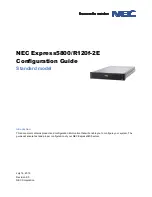
Secure Digital (SD) Card Protocol Description
4-8
SanDisk Secure Digital (SD) Card Product Manual, Rev. 1.9 © 2003 SANDISK CORPORATION
After the bus is activated, the host will request the cards to send their valid operation conditions (ACMD41
preceding with APP_CMD—CMD55 with RCA=0x0000). The response to ACMD41 is the operation condition
register of the card. The same command shall be send to all of the new cards in the system. Incompatible cards are
sent into
Inactive State
. The host then issues the command ALL_SEND_CID (CMD2) to each card to get its unique
card identification (CID) number. Card that is unidentified (i.e., which is in
Ready State
) sends its CID number as
the response (on the CMD line). After the CID was sent by the card, it goes into
Identification State
. Thereafter, the
host issues CMD3 (SEND_RELATIVE_ADDR) asking the card to publish a new relative card address (RCA),
which is shorter than CID and which will be used to address the card in the future data transfer mode (typically with
a higher clock rate than f
OD
). Once the RCA is received, the card state changes to the
Stand-by State.
At this point, if
the host wants the card to have another RCA number, it may ask the card to publish a new number by sending
another SEND_RELATIVE_ADDR command to the card. The last published RCA is the actual RCA number of the
card.
The host repeats the identification process (i.e., the cycles with CMD2 and CMD3 for each card in the system).
After all the SD Cards are initialized, the host will initialize the MultiMediaCards that are in the system (if any),
using the CMD2 and CMD3 as given in the MultiMediaCard spec. Note that in the SD system, all the cards are
connected separately so each MultiMediaCard will be initialized individually.
4.4. Data Transfer Mode
Until the content of all CSD registers is known by the host, the f
PP
clock rate must remain at f
OD
because some cards
may have operating frequency restrictions. The host issues SEND_CSD (CMD9) to obtain the Card Specific Data
(CSD register), e.g., block length, card storage capacity, maximum clock rate. Figure 4-8 shows a block diagram of
the Data Transfer Mode.
















































